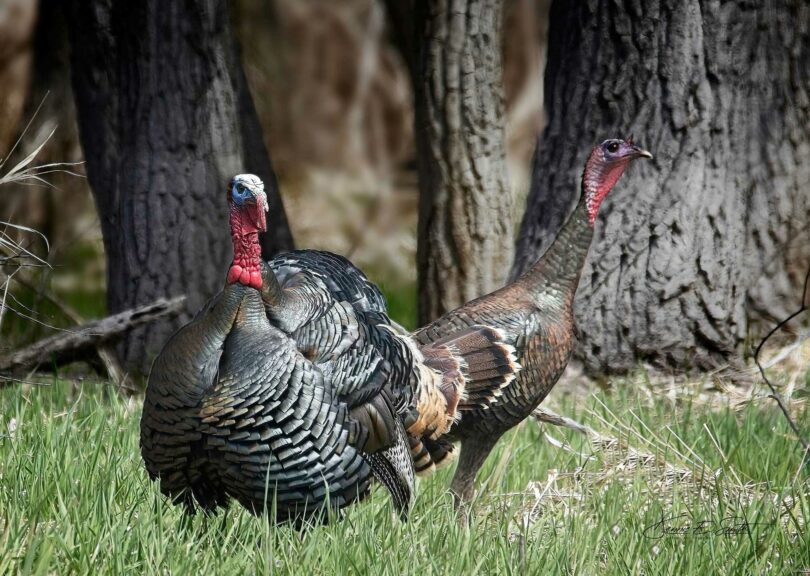By Dennis Smith
I continually find myself amazed by the incredible diversity of feathers found in songbirds. Barnyard chickens, too, for that matter. Never mind waterfowl, herons, cranes, raptors and the wildly-exotic rainforest parrots, macaws and toucans; Asian and African pheasants and peacocks, flamingoes, bee eaters and such. From the tiniest hummingbird to the largest ostriches and emus, the variety of plumage and patterns birds display seems almost infinite.
I come into contact with a lot of the more common feathers because I tie flies, and so many of them are collected and used in the fly-tying industry; peacock and ostrich plumes, grouse and gamecock hackles, duck wing primaries and flank feathers, ringneck pheasant tails, and turkey feathers are all mainstays in the fly-tying world.
Turkey feathers, in particular, from both wild and domestic strains are extremely versatile. Parts from almost all of their wings, tail and body feathers are used in many of the world’s most popular fly patterns. The natural colors of wild turkey feathers mimic those found in many aquatic and terrestrial insects, and those same feathers from domestic white turkeys are dyed to almost every imaginable color and shade under the sun.
They often appear drab and dark from a distance or to the casual observer, but up-close, wild tom turkeys boast a flashing, kaleidoscopic array of constantly changing metallic black, copper, tan, rust, buff, and white in intricately arranged stripes, bars, and bands. During the spring mating season, the wattles and snoods on the males’ heads morph in continually alternating hues of bright red, blue and white.
A few years ago, the boys and I were hunting turkeys along the South Platte River. They were using bows and I was hunting with my camera. We were hiding behind a makeshift blind of camouflage netting, cattail stalks and random cottonwood limbs haphazardly thrown together in a panic when we heard a tom turkey gobble nearby. Turns out there were actually three of them, all young toms, or “jakes” as they are sometimes known, and they just appeared suddenly from behind a cluster of cottonwood trees a few yards away. So close, in fact, the boys couldn’t possibly draw their bows without being seen.
We sat fascinated and simply watched in awe as they paraded back and forth in front of us yelping, purring and gobbling. The boys didn’t shoot but I managed to squeeze off a few shots with the camera before they wandered back into the woods.
Dennis Smith is a freelance outdoors writer and photographer whose work appears nationally. He lives in Loveland.

